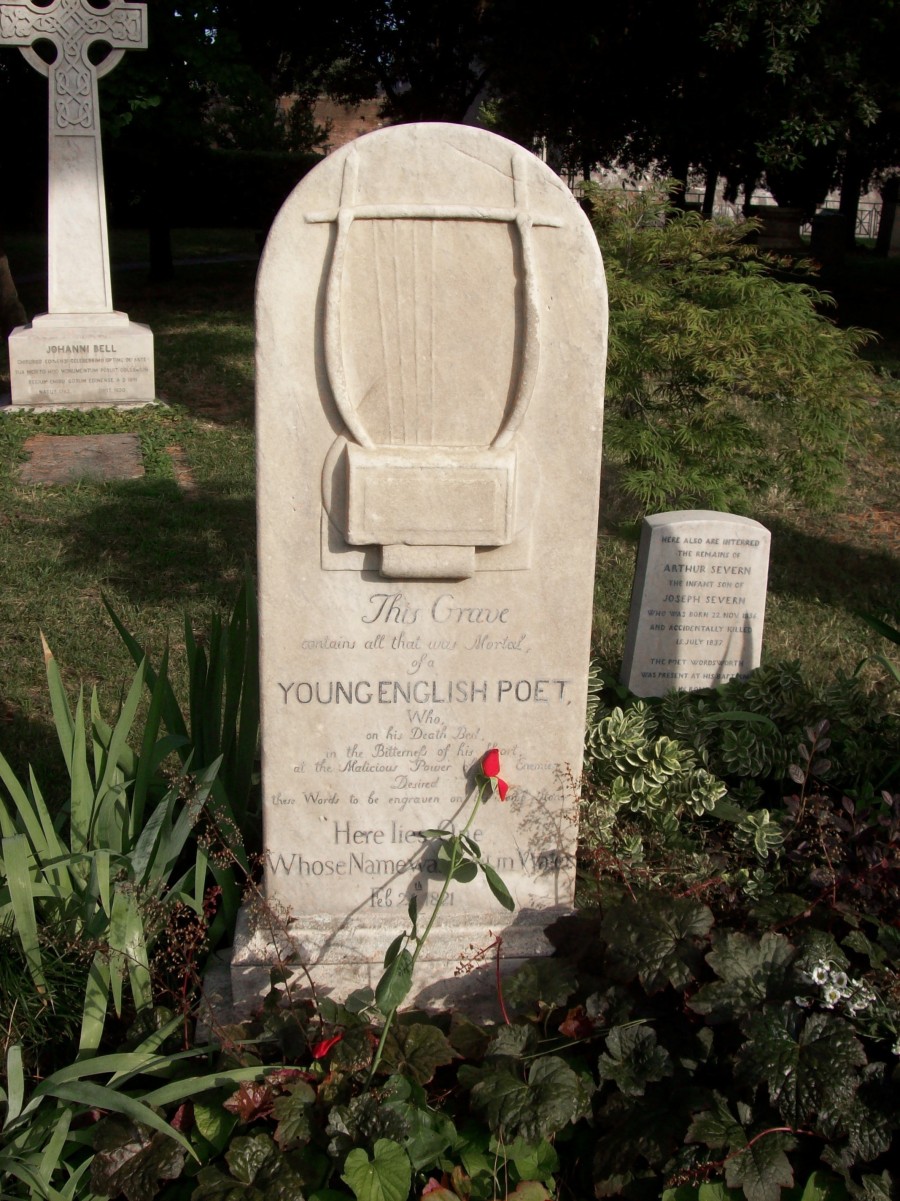
On this day, two hundred years ago, 22-year-old John Keats (1795-1821) returned from a walking tour in the Lake Districts and Scotland with some friends, during which he had begun to show symptoms of the tuberculosis that would kill him within three years.
It was 1818: during that year Keats’s health began to fail and his financial difficulties deepened as his brother Tom also was battling tuberculosis and another brother’s poor investment had left him penniless. The one bright spot in his life was his fiancée, Fanny Brawne.
Keats, the eldest of five children born to a lower-middle-class family in London, had worked at a hospital in London as a junior apothecary and surgeon in charge of dressing wounds, but had abandoned medicine to devote himself to poetry.
Progressive tuberculosis, a family disease, led him to Italy hoping a warm climate would ease his condition. He died in Rome in an apartment overlooking the Spanish Steps, when he was only 25 years old.
According to some researchers, mercury was the cause of his death: he had poisoned himself with the disastrous medical treatments of the time
Keats had been a skilled physician, fully aware of the dangers of old-fashioned treatments such as letting blood, cupping and blistering, and – most lethal of all – mercury. But when he abandoned medicine to pursue his poetic career, he neglected
the deadly effects of the cures with which he was treating himself: the use of mercury for an unspecified ailment, probably a venereal disease. Back in London in August 1818 his prolonged recourse to mercury had already poisoned him. It was in this vulnerable state that he spent considerable time nursing his dying brother and, as a result, he contracted the tuberculosis that sent him to an early grave.
Keats expressed the wish that on his tombstone no name or date should be written, only the inscription ‘Here lies one whose name was writ in water’
The full inscription on his gravestone in the Non-Catholic Cemetery of Rome, reads:
This Grave
contains all that was Mortal,
of a
YOUNG ENGLISH POET,
Who
on his Death Bed,
in the Bitterness of his Heart,
at the Malicious Power of his Enemies
Desired
these Words to be engraven on his Tomb Stone:
“Here lies One
Whose Name was writ in Water.”
Feb 24 1821
il ricordo di un grandissimo poeta
LikeLiked by 1 person
Un grande Romantico 🏵
LikeLiked by 1 person
sì, lui è stato un grande romantico, io sono solo un romanticone
LikeLiked by 1 person
🥀🥀🥀
LikeLiked by 1 person
” ….stagione di nebbie, morbidamente infruttuose…..”
no non ho mai letto Keats ma ne ricordo solo questo frammento citato in un film su un argomento molto più easy.
Leggendo mercurio mi è venuto in mente un episodio, da bambine giocammo con il mercurio ( alcune gocce) fuoriuscite da un termometro rotto.
Ovviamente non si possono vietare attegiamenti spavaldi nell’ infanzia che altro non sono che un uso smodato della ricerca…..una bravata !
Tutte noi bambine che avevamo toccato anche se con molta circospezione quelle gocce che restano come delle palline roteanti e argentee sulla superficie piana del tavolo, ci suggestionammo nel pomeriggio leggendo nello sguardo delle nostre bambole qualcosa di macabro. La cinematografia ha poi spesso avvalorato queste suggestioni creando dei capolavori illogici. Credo però ci sia un codice per la professione medica che non permetta di appropriarsene per poi disfarsene, saranno le solite frasi sul complotto ?
LikeLike
Che meravigliosa descrizione del tuo ricordo…Hai trasmesso un’emozione 💜
LikeLiked by 1 person
Amazing
LikeLiked by 1 person
🌹
LikeLike
Non fu un piacevole pomeriggio, mettemmo le bambole in una cassapanca, forse una cadde e noi spaventatissime pensammo che volessero uscire. Mio figlio mi ha portato al cinema a vedere due film sulle bambole ma continuo a pensare che fosse colpa dell effetto tossico del mercurio. Stasera leggerò keats …..la rosa l ha portata Lei ?
LikeLiked by 1 person
❤
LikeLike